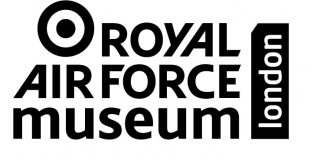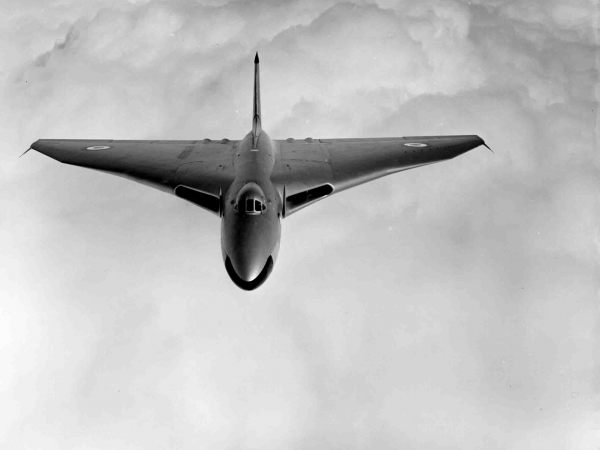Lunchtime Lecture: Vulcan B2 Survivability in the Cold War (Part 2)
On Tuesday 12 August 2025 at 12pm, Julian Grenfell will consider the survivability of the Vulcan B2 in the Cold War. This is Part Two of the Lecture; Part One can be found here: Lunchtime Lecture (London): The Vulcan and the Cold War - crowdcast
This lecture will be hosted virtually via Crowdcast and livestreamed from the RAF Museum's London site.
Talk Outline
Part Two begins with a reminder of Part 1, and then moves on to the main points of determining bomber survivability. We discuss what is meant by accuracy in bombing. The accuracy of a bomb is determined by the measurement of height and speed of the aircraft. How do we measure height accurately? What are the physical effects on a released weapon which will, in part, determine the accuracy of the bomb?
A bomber may be hit by an air defence weapon, but is the bomber still able to carry out it function? What do we mean by the term ‘kill’ in respect of damage to an air platform. We examine this point by talking about probabilities of kill of threat air defence systems in the context of the kill chain. In short, we discuss bomber survivability in war and, in particular, the survivability of the Vulcan in war.
About Julian Grenfell
Julian was born in Agra, India, and joined the Royal Air Force in 1960. After completing Air Electronics Officer flying training at RAF Topcliffe, he was posted to 230 Operational Conversion Unit, thence to 27 Squadron on Vulcan B2s. Other squadrons he flew on were, IX Sqn (in Cyprus), 44 Sqn, 101 Sqn, and 617 Sqn though not in that order. Julian was the Wing Air Electronics Officer at RAF Waddington where he was responsible for Vulcan aircrew air and ground electronic warfare (EW) training, he flew war mission flight profiles with other Vulcan B2 crews as an assessor. Moreover, he flew on Red Flag, and was also a Red Flag EW assessor at Nellis AFB, Nevada, in the United States. Julian has some 4,500 hours flying Vulcan B2 bombers.
Julian has a BSc (Honours) degree in Mathematics from the University of Manchester in England; he was a Chartered Mathematician, a Chartered Scientist, and worked in the defence industry in the electronic warfare (EW) environment. Julian worked on naval active off-board decoys, airborne electronic countermeasures (ECM), and radar warning receivers (RWRs). Julian later was Chief Engineer EW for Mass Consultants Ltd in Lincoln before starting his own EW consultancy. Though now retired, Julian manages to keep his hand in with the with the ‘odd’ engineering task, and has found time to write two books on Vulcan operations in the Cold War.
Ticket options
On Tuesday 12 August 2025 at 12pm, Julian Grenfell will consider the survivability of the Vulcan B2 in the Cold War. This is Part Two of the Lecture; Part One can be found here: Lunchtime Lecture (London): The Vulcan and the Cold War - crowdcast
This lecture will be hosted virtually via Crowdcast and livestreamed from the RAF Museum's London site.
Talk Outline
Part Two begins with a reminder of Part 1, and then moves on to the main points of determining bomber survivability. We discuss what is meant by accuracy in bombing. The accuracy of a bomb is determined by the measurement of height and speed of the aircraft. How do we measure height accurately? What are the physical effects on a released weapon which will, in part, determine the accuracy of the bomb?
A bomber may be hit by an air defence weapon, but is the bomber still able to carry out it function? What do we mean by the term ‘kill’ in respect of damage to an air platform. We examine this point by talking about probabilities of kill of threat air defence systems in the context of the kill chain. In short, we discuss bomber survivability in war and, in particular, the survivability of the Vulcan in war.
About Julian Grenfell
Julian was born in Agra, India, and joined the Royal Air Force in 1960. After completing Air Electronics Officer flying training at RAF Topcliffe, he was posted to 230 Operational Conversion Unit, thence to 27 Squadron on Vulcan B2s. Other squadrons he flew on were, IX Sqn (in Cyprus), 44 Sqn, 101 Sqn, and 617 Sqn though not in that order. Julian was the Wing Air Electronics Officer at RAF Waddington where he was responsible for Vulcan aircrew air and ground electronic warfare (EW) training, he flew war mission flight profiles with other Vulcan B2 crews as an assessor. Moreover, he flew on Red Flag, and was also a Red Flag EW assessor at Nellis AFB, Nevada, in the United States. Julian has some 4,500 hours flying Vulcan B2 bombers.
Julian has a BSc (Honours) degree in Mathematics from the University of Manchester in England; he was a Chartered Mathematician, a Chartered Scientist, and worked in the defence industry in the electronic warfare (EW) environment. Julian worked on naval active off-board decoys, airborne electronic countermeasures (ECM), and radar warning receivers (RWRs). Julian later was Chief Engineer EW for Mass Consultants Ltd in Lincoln before starting his own EW consultancy. Though now retired, Julian manages to keep his hand in with the with the ‘odd’ engineering task, and has found time to write two books on Vulcan operations in the Cold War.




